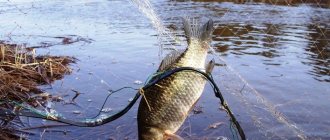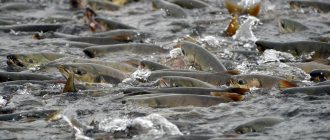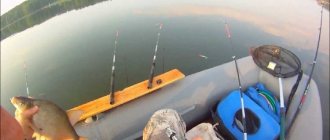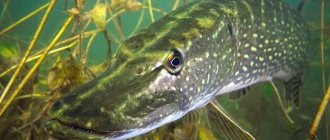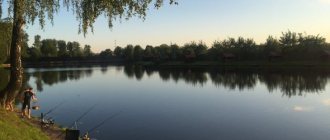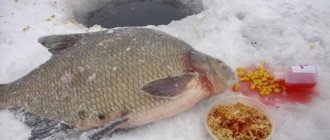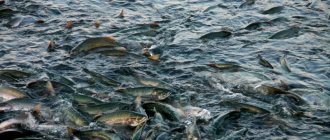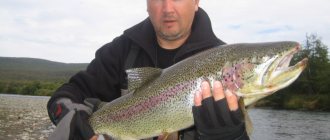Spring is the spawning period for most fish species and bream is no exception. In the spring, sexually mature bream gather in large schools and go to spawning grounds to leave offspring and continue their family line.
Bream reaches sexual maturity in the third or fourth year of life, when its length is approximately 25-30 centimeters, depending on the reservoir and food supply. Interestingly, female bream reach maturity a year later.
When the time comes for bream to spawn, smaller individuals are sent to the spawning grounds first, and after a few days they are followed by larger bream. Before spawning, bream becomes covered with a white rash, and its scales darken. The bream begins to spawn.
general information
This fish is found everywhere: it inhabits the basins of the Black, Caspian, Baltic and North Seas, is found in the lakes of Karelia, and in almost all reservoirs of the northwestern and European parts of our country. Bream prefers a weak current, likes to stand in deep creeks and holes, in hollows under steep banks, etc. It is especially good at catching above dams and dams. Such places attract bream not only due to the lack of a strong enough current, but also due to their depth, as well as the presence of rubble of snags. This representative of cyprinids prefers a clayey bottom covered with silt. In lakes and ponds it stays at a certain distance from the shore.
The vast majority of fish that live in fresh water bodies, bream, reproduce by spawning. It is based on fertilization of eggs with milk. How spawning takes place, under what conditions the reproduction of fish such as bream occurs, photos and features of this process will be presented in this article.
Bream before spawning
Before the second ten days of April, bream does not begin to spawn (except in exceptional cases), but preparation for the important process begins even if there is ice on the reservoir.
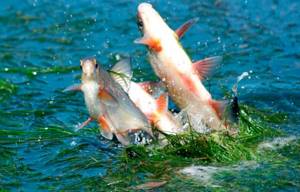
The noisy behavior makes it easy to spot where the fish are gathering.
Conventionally, preparation takes place in 3 main stages:
- awakening. As soon as warm spring water begins to seep into the reservoir, bream emerges from the holes in search of food. Its main task is to restore strength and provide itself with energy for the entire spawning period;
- path. The movement of schools of bream occurs at the same time as the ice drift. Now he is moving towards the spawning grounds and choosing suitable places. Often the fish have to travel 2-4 km in search of a suitable place. The bream's appetite before spawning is still preserved; it greedily eats almost any food that gets into the water;
- arrival. While the bream finds a good place for eggs, the water usually warms up. The temperature is fixed and allows you to engage in spawning.
Fishing for bream before spawning is effective from February until the end of March. The entire period from the moment of awakening to the discovery of the spawning ground, the prey is well hooked.
Preparation
Sexual maturity of this representative of the carp family occurs only in the fifth or sixth year of life. In normal times, males are practically no different from females. But a couple of weeks before the start of spawning, modifications begin. At this time, the male bream changes amazingly: the photo of this fish during this period is very interesting. You can notice characteristic growths on the male’s head, which disappear literally immediately after spawning. Its color also changes: it darkens noticeably. In addition, the body of males is covered with a wart rash.
At the end of winter, bream, leaving their wintering grounds, goes in search of areas for spawning. Experts call this process the pre-spawning run. It has its own characteristics. Since almost all cyprinids are phytophiles, bream spawning involves laying eggs on plants. One of the features of this process is that the reproduction of this fish occurs at a close distance from its permanent habitat.
Effect on bite
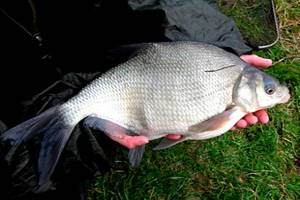
During the entire spawning period, bream can be caught with a variety of gear. During the fish run, the main thing is to determine the place where the school is currently located. If you get to such a place and feed it a little so that the flock lingers, then you can count on an excellent catch.
The second point of successful fishing is catching bream at the spawning site. While one age flock is breeding, others are feeding, either waiting for their turn, or eating after spawning.
Tackle
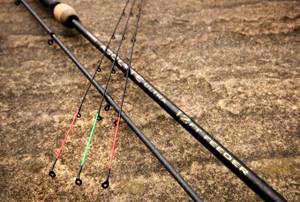
To catch bream during the spawning period, use conventional gear:
- fly rod;
- wire rod;
- plug tackle;
- match tackle;
- donka;
- feeder.
The choice of one option or another depends on the specific fishing location. If you need a long cast, choose a match or a feeder. When fishing near the shore - swing or plug. Some people like bottom fishing, others like line fishing.
Lures
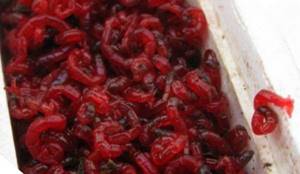
Like many other fish, before and during spawning, bream prefers to eat animal food, so bait comes first during this period, not bait:
- bloodworm;
- caddisfly;
- earthworm and dung worm;
- maggot;
- insect larvae.
Bream and white bream begin to welcome plant food only after the end of spawning, and once they return to their usual places, baits can be used for sure.
Lure
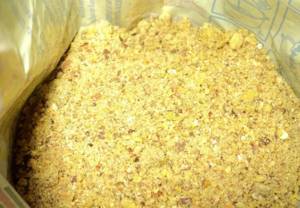
During the bream pre-spawning feast, bait is of secondary importance; detection of the school comes to the fore. But with its help you can keep a passing flock in place. And in the post-spawning period, when fishing on the spawning ground, the feeding table will attract the attention of both large bream and bream.
Early spring baits should attract fish, so the inclusion of dusty substances such as milk powder or cocoa powder in the mixture will be important. After spawning, when the fish eats up, it is worth adding coarse particles to the feed: grains, chopped worms, maggots.
Bream spawning: when does it start and end?
The reproduction of this representative of cyprinids occurs in a rather unique way: it can be conditionally divided into three stages. Bream spawning begins at a time when the water temperature in the reservoir reaches thirteen to fifteen degrees. During this season, when the birch tree is just blooming, small individuals go to spawn. The next stage - the spawning of medium-sized bream - begins with the flowering of bird cherry. Well, large specimens go to spawn when the cereal grains begin to ear.
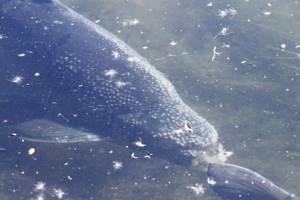
In the south of our country, bream spawning usually begins in mid-April. However, in the lower reaches of the Volga the timing is completely different. Here, bream spawning begins quite early: from the second half of February. Some of the fish, which have already overwintered, go upstream to spawn while still under the ice. Spring bream breeds near the seashore, especially in floodplains. In the central part of Russia and in the northern regions, spawning begins no earlier than the first days of May. As a rule, bream spawning lasts about a month.
Bream after spawning
When bream begins to spawn, fishing for it loses its meaning, since this fish stops biting at this time. However, it can be fished well before and after spawning. When bream go to spawn, how long does spawning last, where to look for fish before spawning and after it ends - the fisherman must navigate these issues.
Preparing for spawning
Despite the fact that bream spawning begins after the rivers open up and the weather becomes warm enough, preparation for the spawning process starts in winter. Already in February, the fish begins to move to the places where reproduction will occur.
Experienced bream fishermen know that as soon as the fish begin to rise from the pits where they overwintered, they can begin hunting for large bream. Since the fish needs to gain strength to spawn, it begins to actively fatten itself, so its bite gradually intensifies, turning into a glutton by spring.
The preparatory period can be represented in the form of several stages:
- February-March - bream comes to its senses after wintering, rises from the holes and gathers in schools.
- March-April - flocks begin to move (move) to spawning sites, actively feeding.
- April-May - arrival at spawning grounds, beginning of spawning.
Of course, the given dates are arbitrary and may shift in one direction or another, since much depends on the region, body of water and weather.
In the southern regions, the movement begins earlier than in the northern ones, and, for example, in lakes bream rises from holes later than in rivers.
To the spawning sites, the bream goes against the current and grabs everything it can find on the bottom of food. Therefore, you can be sure that the fish will bite on almost any bait that the angler offers it.
The time of preparation of bream for reproduction is the right moment for effective fishing for it.
Spawning
Bream begins to spawn when the water temperature reaches a certain point. As soon as the water warms up to a temperature of 12 degrees, the bream stops feeding and begins spawning.
Spawning fish have their own distinctive characteristics:
- color change towards darkening;
- the appearance of whitish warts in males.
In addition, bream are divided into age groups and spawn in these groups.
Spawning bream does not pay attention to any bait or bait. And although you can pick up fish in the water with your bare hands when spawning, you won’t be able to force it to bite.
It would be useful to remember that fishing with certain gear is prohibited during spawning. Fish resources must be protected!
Spawning occurs in shallow areas with aquatic or other vegetation. If the shore of a reservoir is overgrown with reeds, then there is a high probability that bream will spawn there.
The spring flood allows fish to enter floodplains, flooded lowlands and oxbow lakes, which are an ideal place for spawning.
The noise that bream makes during spawning travels quite far. Fish jump out of the water, fall back with a splash, and rub against coastal plants.
All this happens at dawn. First, older individuals spawn, and therefore larger ones. Then smaller bream spawn. As daylight approaches, the process is interrupted and resumed in the evening. But evening spawning is not so active and large fish do not participate in it.
At dawn everything repeats itself. Bream spawning can take quite a long time. As the water temperature rises, the activity of the fish gradually decreases and stops completely when the water warms up to 22 degrees. Therefore, in good sunny weather, spawning can take place quickly, and in cloudy weather it can last up to a month.
Catching bream directly during spawning is futile.
End of spawning
After spawning, bream goes to deep places to rest. Only small bream remain on the spawning ground, which begin to feed here and can be successfully caught. Exhausted fish actively restore their strength and bite consistently on any bait.
Large “bast shoes” rest for some time in the depths, going out for a short time to feed (usually at dawn) in shallow water. Bream fishing at this time can be very successful, you can hope for a good trophy.
If a spawning bream is not tempted by any bait, then after spawning it can be caught with literally anything. While the fish is fattening up after spawning, it is not at all picky. True, such a bite of bream is very short-lived - only a few days.
During the post-spawning feeding period, it is not necessary to use bait; fishing is quite successful without it.
A few days after the end of spawning, the fish rolls down to their permanent habitats, continuing to actively feed. The bite is not as active as immediately after spawning, but it is consistently good and lasts quite a long time - up to two months.
So, what should a fisherman pay attention to:
- Active biting before spawning during the ascent to the spawning grounds.
- The same activity is observed after spawning.
- A good bite persists after spawning for about two months.
- The bream does not bite directly during spawning.
Source: https://orybalke.com/ulov/leshh/neresty.html
Temperature conditions
The main indicator for bream spawning to begin is, of course, the water temperature in a particular body of water. As soon as it crosses the eleven degree mark, this representative of the cyprinids begins preparation. And soon the bream begins to spawn. The time of day also matters a lot. Bream spawning almost always begins in the early morning. The fact is that in addition to water temperature, there is one more condition mandatory for spawning: it is almost complete silence.
Time and conditions for spawning
Bream spawning time mainly depends on water temperature. The most favorable temperature for spawning is from thirteen to fifteen degrees Celsius (mainly in the spring) and lasts about a month.
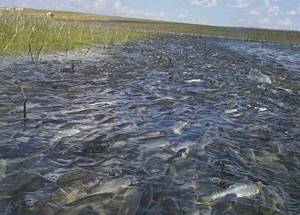
Photo 1. Bream moving to spawn.
The time of day also matters a lot. Bream spawning generally begins in the early morning, since one of the prerequisite conditions for spawning is complete silence.
The period of sexual maturity in these fish occurs on average in the sixth year of life (less often at three or four years). During this period, bream are divided into groups according to age and size. The size of the bream reaches a significant size. On average, they weigh about 4 - 5 kilograms and 30 - 45 centimeters in length, but sometimes reach truly large sizes (about 8 - 10 kilograms and 70 centimeters in length).
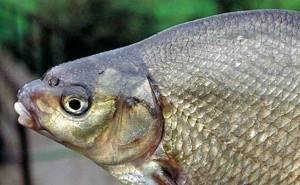
Photo 2. Characteristic tubercles appear on the male’s head.
Duration and location
For reproduction, all bream choose mainly those areas of reservoirs in which water is present exclusively during the spring flood. As a rule, these are meadows flooded with water. Bream usually lay their sticky eggs on the grass that grows on them. In addition, this representative of cyprinids can choose any other areas of a particular reservoir for spawning. But at the same time, there is one obligatory condition: there must be vegetation on them. It can be reeds and sedges, as well as reeds and pondweed.
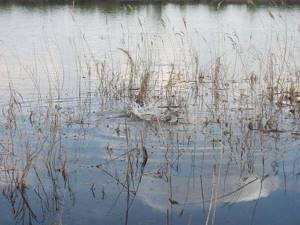
Where and how does bream spawn?
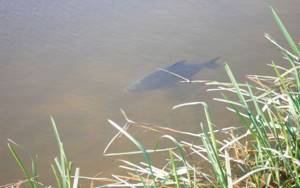
Bream prepares for spawning much earlier than the moment when it begins to spawn. Somewhere in early March, it gathers in flocks and begins to move upstream against the current to find a suitable place. In reservoirs with stagnant water, bream comes closer to the shore, looking for the necessary place. As a rule, the bream knows where they are, unless a person can intervene in this process. This period is characterized by the fact that bream bites on any gear and fishing can be very productive.
Just before the start of spawning, when the water warms up to the required temperature, the males begin to fight for the females. As a result, several groups may be formed, divided according to age.
Bream spawns during spring flood conditions, choosing meadows flooded with spring water. He lays his eggs on this grass. If there are no such places, then the bream can find other suitable places. The main requirement is the presence of grass or other aquatic vegetation to which fish eggs can stick. These are areas of the water area overgrown with reeds, sedges, reeds, etc. The spawning process of bream is very noisy and it is impossible not to notice it. The bream constantly jumps out of the water and falls back into the water with force.
In about a week, fry will appear from its eggs, and after a month they will reach a size of more than 1 cm and will be able to feed on their own. Over the course of a year, the fry will grow into breams, about 10 cm long.
Spawning process
The spawning of this fish is preceded by mating games, when individuals of approximately the same size begin to move in a circle. The larger specimens start first. The process of their spawning is usually very noisy. Bream splash forcefully on the water and make a noise very similar to “fishing”. Actually, it is thanks to this feature that this fish got its name.
The next stage is the laying of eggs by females. The fertility of these individuals is usually quite high. One female produces about one hundred and fifty thousand eggs. They are yellow in color and tightly attached to aquatic vegetation. And after one week, the eggs turn into larvae. The transformation into fry occurs within one month, and after sixty days they already reach almost twelve centimeters in length.
The timing of egg ripening is greatly influenced by the temperature in the reservoir. The warmer the water, the faster the larvae appear.
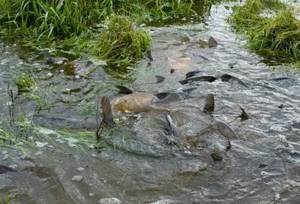
Place
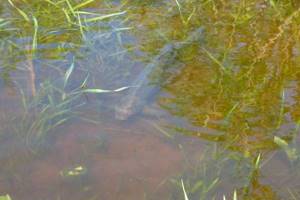
Bream spawning occurs mainly in shallow water. In such places under water there must be last year's aquatic vegetation or small snags. These can be shallow river bays, meadows flooded with melt water. Often schools of bream enter small rivers that flow into their native river to spawn.
The water temperature in the shallow spawning grounds at the time the flock arrives here is already significantly warmed up by the spring sun and reaches the required 12 degrees, which means mating games can begin.
Post-spawning period
Sometimes in places where eggs are laid, you can clearly hear some activity of this fish. It is believed that in this way bream protect their future offspring from other underwater inhabitants, in particular from perch and crucian carp. Only males are involved in “protecting” the eggs, while females almost immediately leave the spawning grounds. After some time, all the fish return to their previous habitat.
After spawning, the bream, which remains at the spawning site for some time, leaves the shallow water after three to four days and moves to a deeper area. Here he takes a break for a while to rest. During this period, the bream practically does not feed. In fact, it remains in such deep areas all summer, only occasionally swimming into shallow water in search of food. As a rule, this happens at dawn.
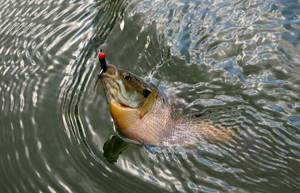
One, maximum two weeks after spawning, this representative of the cyprinids again begins to feed very actively and look for food.
Fishing for bream after spawning can be incredibly effective. For example, in the reservoirs of the Moscow region, this fish’s zhoring begins in early summer (early June), while in more southern regions it occurs several weeks earlier. Post-spawn bream fishing can be incredibly productive for about two months. During this period, until approximately the end of July, prey bites on almost any bait used for fishing, of any origin, both animal and plant. But already in August the activity of bream noticeably weakens.
Ban on fishing during spawning season
After spawning, the bream begins to dynamically fatten up. Sometimes you can hear some activity of bream in the spawning areas. It is believed that fish in this way protect their eggs from other underwater inhabitants (most often from crucian carp and perch). The males are responsible for “protecting” the eggs, since the females almost immediately leave the spawning site. After some time, the fish returns to its permanent habitat.
Even in ancient times, when fishing played an important role in the life and well-being of people, there were a number of rules of behavior during spawning.
The wheels of the cart driving across the bridge were wrapped in burlap (this was done so that the fish would not be scared). During this period, it was prohibited to drive livestock to a reservoir and loud communication on the banks of rivers and lakes.
In fishing, just like in any other area, there are rules and laws. One of the strictest rules at the moment is the ban on fishing during the spawning season.
Fishing during the spawning period threatens the reduction or disappearance of a certain type of population.
Monitoring the process of compliance with the law is not difficult. Despite the fact that the spawning period of two or more species of fish may coincide, there are still significant differences in location, depth and time of day that characterize this process in different populations. This factor has a beneficial effect on the coexistence of different species and prevents poaching from flourishing.
Today, there are also restrictions on the use of certain fishing means during spawning: the use of nets is strictly prohibited by law. There is also a ban on the use of boats with engines and the use of explosive devices.
In summer, after a short period of fattening, a favorable period for fishing begins. To ensure a successful catch, it is necessary to take into account how the bream behaves at different periods and what it eats at this time.
This type of fish loves clayey or sandy-silt bottom. The main habitats of bream are clay pits, grassy areas and deep pools.
We suggest you familiarize yourself with: Do-it-yourself roach bait for different fishing conditions and seasons
Bream feeds mainly in river beds, at the border of reeds and reeds. Places of movement often include river beds and coastal vegetation.
The bream comes out to feed several times a day. The most favorable weather conditions for catching bream are warm, windless days. In cold winds and cloudy weather, bream rarely comes out to feed.
Choosing the right bait and bait is the key to successful fishing.
The best baits for bream are mixtures that include:
- steamed cereal grains;
- peas;
- various porridges.
Most of them can be purchased at a regular grocery store.
Advice! It is recommended to use bloodworms, worms and maggots as bait. As the water warms, vegetable baits will also come into use: corn, dough, steamed grains, pearl barley, and the like.
